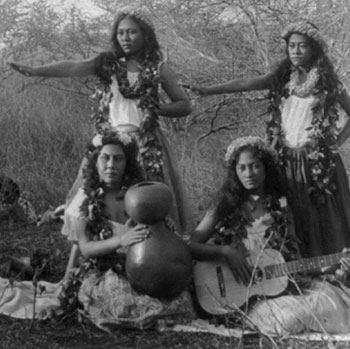The Affects of Whaling on Native Cultures
North American and European Whaling ships were at sea for months. Long voyages meant stopping now and then to get supplies, such as lumber as fuel for ships and food for crew, as well doing repairs on the boats. In this way, whalers came into contact with native peoples in Alaska, New Zealand, and on the islands of the South Pacific. During the hundred years, from when the very first whalers set out to the very end of the whaling era, their presence meant changes in the native societies they encountered. Some of those changes were helpful to the native peoples. Others of the changes were disruptive to those societies.
Whaling ship crews were not the only Americans and Europeans to interact with native peoples. Missionaries and traders also influenced native culture. Whaling ship crews did not generally stay long in any given port or settle permanently. They often arrived after missionaries had already established themselves among the native peoples.

Library of Congress